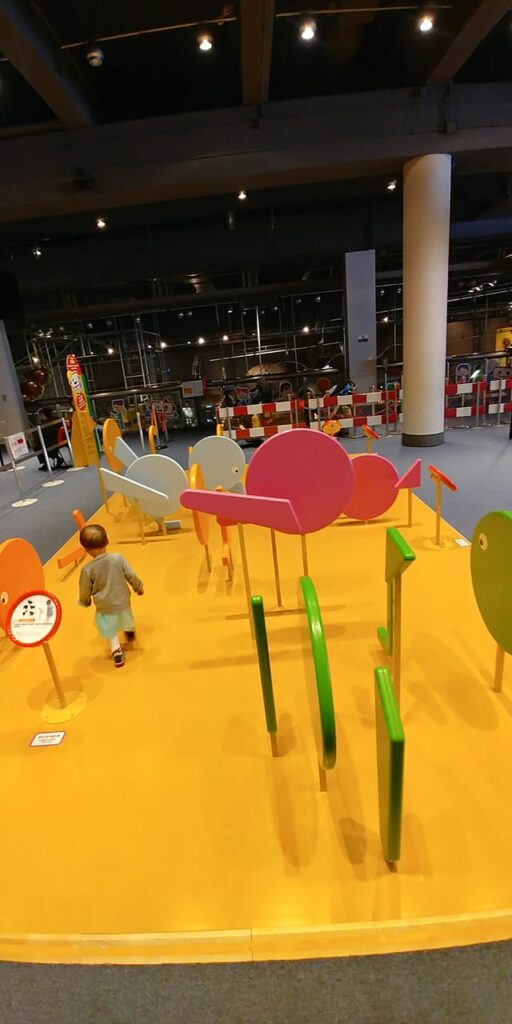Finding engaging activities for toddlers in Hong Kong can feel like a quest. You want something stimulating, safe, and ideally, indoors when the weather isn’t cooperating. The Hong Kong Science Museum often comes up as a popular family destination. But with its focus on complex scientific principles and interactive exhibits designed for various age groups, is it truly suitable for those wobbly walkers and curious little explorers under the age of three or four?
Hong Kong parents online have shared their experiences, offering a mix of perspectives. While some swear their toddlers loved it, others found challenges with accessibility or engagement levels for the youngest visitors. Let’s dive deep into what the Hong Kong Science Museum offers for the toddler crowd and how to make the most of your visit.
The Hong Kong Science Museum: A Family Favorite
Located in Tsim Sha Tsui, the Hong Kong Science Museum has been a staple for families for decades. It boasts a vast collection of exhibits covering various scientific disciplines, from mechanics and motion to light, sound, and life science. Its hands-on approach is designed to make learning fun and accessible for school-aged children and older. But what about the earliest learners?
Is the Hong Kong Science Museum Really Toddler-Friendly?
This is the million-dollar question many parents ponder. Based on the experiences shared by local moms, the answer is nuanced: yes, it absolutely can be suitable, but with some key considerations and perhaps adjusted expectations.
Many parents report their toddlers, even as young as 18 months or 2 years old, have had positive experiences. Why? Toddlers often delight in simple sensory inputs and the sheer novelty of a new environment. They don’t need to understand the complex physics behind an exhibit; they might just be fascinated by a blinking light, a moving part, or the ability to push a button (even if it doesn’t do exactly what it’s meant to for them).

For instance, a toddler might not grasp the concept of gears but could be utterly captivated by watching them spin. They might not understand electricity but could be drawn to the hum and visual display of a simple circuit. Their engagement comes from exploration and basic interaction.
However, challenges do exist. Some exhibits are simply too tall or complex for little hands and minds. A 17-month-old might find many main gallery activities out of reach, requiring constant lifting or missing out entirely. Mobility is another factor; toddlers who can walk independently and explore on their own often get more out of the visit than those who still rely heavily on being carried or holding a hand. Crowds, especially on weekends and public holidays, can also be overwhelming for small children (and their parents!).
Exploring Toddler-Friendly Zones and Exhibits
While the entire museum might not be designed with toddlers in mind, specific areas hold particular appeal and are more accessible for this age group.
The Children’s Discovery Gallery: This area is frequently highlighted by parents as the saving grace for the younger set. Designed specifically for children aged 3-10, it features exhibits focused on science concepts relevant to daily life through interactive play. Think water tables where they can splash and see currents flow (with supervision, of course!), simple construction zones with large soft blocks, tunnels to crawl through, and sensory exploration points. While aimed slightly older, many elements here are perfect for toddler interaction. A two-year-old might spend ages simply moving water with a scoop or stacking oversized foam bricks.
Ground Floor Exhibits (Nature/Environment): While potentially dated in presentation according to some visitors, sections like the Nature & Environment Hall can offer visual and auditory stimulation. Bright displays, models of animals or plants, and perhaps simple interactive buttons that trigger sounds or lights can capture a toddler’s attention for short bursts.
Specific Classic Exhibits (if still present/functional): Parents recall beloved exhibits from their own childhood visits. While some, like the chicks hatching, are gone, others might remain in some form. Look for exhibits with large, colourful visuals, simple cause-and-effect mechanisms (like pushing a large lever), or gentle movement. A toddler might be fascinated by the pendulum swinging or watching balls travel through a simple maze, even if the exhibit’s core lesson is beyond them.
It’s important to remember that toddlers have short attention spans. A successful visit with a little one means focusing on a few key areas where they show interest, rather than trying to see everything.

Navigating Your Visit with a Little One
Making the most of your Hong Kong Science Museum trip with a toddler requires a bit of strategy.
Timing is Everything: Weekdays are significantly less crowded than weekends. Arriving early when the museum opens can give you a crucial window of quieter exploration before the main crowds arrive. Consider avoiding school holidays if possible.
Pace Yourselves: Don’t feel pressured to see every exhibit. Follow your child’s lead. If they are captivated by watching a conveyor belt move objects for five minutes, let them. If they seem overwhelmed, move on. Keep the visit relatively short – perhaps 1-2 hours focused on the most engaging areas.
Snack and Rest Breaks: Have snacks and drinks handy. Identify quieter spots or seating areas for short breaks when your toddler needs to decompress or refuel.
Stroller or Carrier? Depending on your child’s age and mobility, a stroller can be useful for getting around the main halls, but it might be cumbersome in crowded areas or specific exhibit spaces like the Children’s Gallery. A carrier might offer more flexibility in tight spots but can be tiring for longer visits. Many choose a mix or use the stroller primarily for transit within the museum.
Utilise Amenities: Check the museum map for family facilities like changing rooms and accessible toilets. The museum cafe or nearby dining options can be convenient for a quick bite before or after your visit.
Consider Membership: An annual pass can offer excellent value if you plan multiple visits. It allows you to pop in for just an hour or two without feeling the pressure to “get your money’s worth” from a single ticket. Plus, the pass often grants access to other Leisure and Cultural Services Department (LCSD) museums. Admission is also free on Wednesdays!
Addressing the “Dated” Perception
Several parents note that parts of the Hong Kong Science Museum feel dated compared to newer, highly interactive science centres globally. While true for some exhibits, particularly older ones, this often matters less to very young children who are experiencing everything with fresh eyes.
The good news? There are reports that the museum has received funding for modernisation. This suggests that improvements are potentially on the horizon, which could enhance the experience for all ages in the coming years. Furthermore, the Hong Kong Space Museum, part of the same system, has undergone renovations and is described as more interactive now. This bodes well for future updates elsewhere.
Beyond Science: Other Museum Options for Families
Hong Kong offers a range of museums, and while the Science Museum is popular, several others are highly recommended for families with young children:
Hong Kong History Museum: Located right opposite the Science Museum, the History Museum offers a fascinating journey through Hong Kong’s past. While perhaps less hands-on for toddlers, it has engaging dioramas and exhibits that can capture attention. It’s also mentioned as having a nice cafe. Learn more: History Museum Website.
Hong Kong Space Museum: Having undergone renovation, this museum now offers more interactive exhibits alongside its iconic dome theatre. While some exhibits might be complex, the visuals and general theme can be captivating for younger children interested in stars and planets. Learn more: Space Museum Official Website.
Hong Kong Children’s Discovery Museum: Located in North Point, this museum is specifically designed for young children aged 0-10. It offers a wide range of hands-on, play-based exhibits focused on science, culture, and art, tailored specifically for different age groups within that range. Many parents find this a more directly suitable option for toddlers due to its targeted design. Learn more: Museum official website
Macau Science Center: If you’re considering a trip to Macau, their Science Center is highlighted by some parents as being very toddler-friendly, noting its easy-to-navigate ramp structure and interactive exhibits.
Conclusion
So, is the Hong Kong Science Museum suitable for toddlers? Yes, it can be a worthwhile and enjoyable outing! While not every exhibit will be tailored for their age, areas like the Children’s Discovery Gallery offer fantastic opportunities for sensory play and basic interaction. With realistic expectations, strategic timing to avoid peak crowds, and focusing on the sections that capture your little one’s interest, a visit to the HK Science Museum can be a fun, air-conditioned adventure for both toddlers and parents alike. Coupled with its affordable annual pass option and free entry on Wednesdays, it remains a popular and accessible choice for families in Hong Kong looking for engaging indoor activities.
Frequently Asked Questions (FAQ)
While parts like the Children’s Discovery Gallery are best for ages 3+, older children (5-10+) will likely understand and engage more deeply with the main exhibits. However, toddlers (18 months – 3 years) can still enjoy specific interactive and sensory areas.
The Children’s Discovery Gallery is the most targeted area for younger visitors, though it spans a wider age range (3-10). Some exhibits within this gallery are more suitable for the toddler end of that spectrum (e.g., sensory play, building blocks).
The museum can get very crowded, especially on weekends, public holidays, and during school trips. Visiting on a weekday, particularly in the morning right after opening, is highly recommended for a less stressful experience with a toddler.
Besides the Science Museum, popular choices include the Hong Kong History Museum, the renovated Hong Kong Space Museum, and the Hong Kong Children’s Discovery Museum which is specifically designed for children aged 0-10.
You should check the official Leisure and Cultural Services Department (LCSD) website for the most current information on ticketing, annual passes, free admission days (like Wednesdays), and opening hours for the Hong Kong Science Museum and other LCSD museums.



